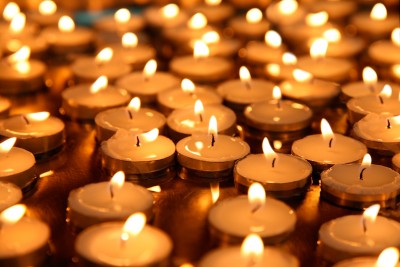
Communal Mourning: “Dylann Roof Acted Alone, But He Did Not Stand Alone”
In many Reform congregations, it is customary for the entire congregation and not just those who are halachic mourners to stand while saying Kaddish. This deviation from traditional practice is designed to provide community for those who are actively mourning: no one who mourns should stand alone. And this practice also acknowledges a communal responsibility to say Kaddish for those who have no one to do so.
Such a communal approach to mourning might guide us as we continue to come to grips with the atrocity that was committed in the Emanuel AME Church in Charleston, South Carolina. All people of conscience, whether that conscience is derived from religious or secular traditions, need to stand with the family and friends of the victims of that terrorist attack. We need to remember the names of those who met their death simply for praying while black : Depayne Middleton Doctor, Cynthia Hurd, Susie Jackson, Ethel Lance, The Reverend Clementa Pinckney, Tywanza Sanders, Daniel Simmons Sr., Sharonda Coleman-Singleton, and Myra Thompson.
And part of our communal responsibility is to acknowledge that although officials believe that Dylann Roof “acted alone,” he did not stand alone. Based on what we currently know, Roof did not have active collaborators in this terrorist plot. But he communicated online with white supremacists, his father bought him a gun, his roommate listened to him make plans to “start a civil war,” those who knew him in high school heard him make racist jokes and wrote them off as “Southern Pride” and “strong conservative beliefs.” His home state of South Carolina flies a Confederate flag at its Statehouse and judging from his Facebook page, he was inspired by the apartheid history of South Africa and Zimbabwe (formerly Rhodesia). Vigils and services designed to promote solidarity across racial and religious lines were disrupted by bomb threats. In the chilling manifesto that Roof likely wrote, he took aim at Blacks, Hispanics, Asians, and Jews; although his anti-Semitic complaint is that the Jews “network,” his ideology of hate is advanced by new technologies. Dylann Roof did not and does not stand alone. And thus those of us of conscience who did not personally know Depayne, Cynthia, Susie, Ethel, Clementa, Tywanza, Daniel, Sharonda, and Myra must be sure that their immediate mourners and communities are not standing alone.
Helene Meyers is Professor of English and McManis University Chair at Southwestern University. Most recently, she is the author of Identity Papers: Contemporary Narratives of American Jewishness , which includes a chapter on the color of white Jewry. She is currently writing a book on Jewish American cinema.



